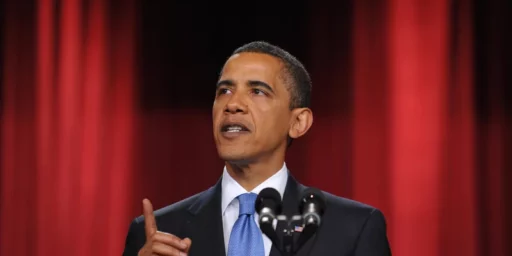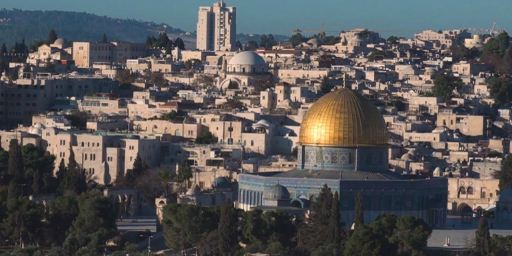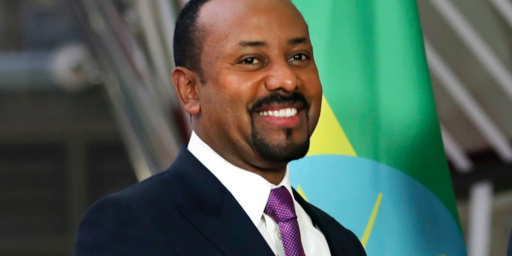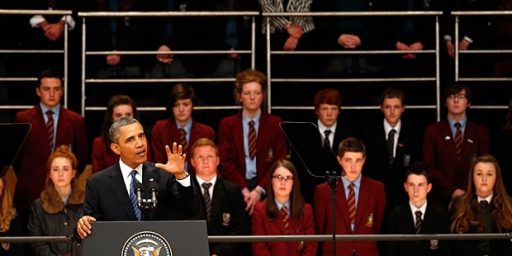Failed States Index 2007
Foreign Policy has published the latest edition of The Failed States Index 2007. It is not a cause for celebration:
Few encouraging signs emerged in 2006 to suggest the world is on a path to greater peace and stability. The year began with violent protests that erupted from Indonesia to Nigeria over the publication of cartoons depicting the Prophet Mohammed. February brought the destruction of Samarra’s golden-domed mosque, one of Shiite Islam’s holiest shrines, unleashing a convulsion of violence across Iraq that continues unabated. After Hezbollah kidnapped two Israeli soldiers last July, southern Lebanon was bombarded for a month by air strikes, sending hundreds of thousands of refugees fleeing into neighboring states. And in October, the repressive North Korean regime stormed its way into the world’s nuclear club.
What makes these alarming headlines all the more troubling is that their origins lie in weak and failing states. World leaders and the heads of multilateral institutions routinely take to lecterns to reiterate their commitment to pulling vulnerable states back from the brink, but it can be difficult to translate damage control into viable, long-term solutions that correct state weaknesses. Aid is often misspent. Reforms are too many or too few. Security needs overwhelm international peacekeepers, or chaos reigns in their absence.
The complex phenomenon of state failure may be much discussed, but it remains little understood. The problems that plague failing states are generally all too similar: rampant corruption, predatory elites who have long monopolized power, an absence of the rule of law, and severe ethnic or religious divisions. But that does not mean that the responses to their problems should be cut from the same cloth. Failing states are a diverse lot. Burma and Haiti are two of the most corrupt countries in the world, according to Transparency International, and yet Burma’s repressive junta persecutes ethnic minorities and subjects its population to forced resettlement, while Haiti is wracked by extreme poverty, lawlessness, and urban violence. For a decade, Equatorial Guinea has posted some of the highest economic growth in sub-Saharan Africa, yet its riches have padded the bank accounts of an elite few. And in the Democratic Republic of the Congo, the inability of the government to police its borders effectively or manage its vast mineral wealth has left the country dependent on foreign aid.
The most hopeful signs are largely a statistical artifact:
The year wasn’t all bad news, though. Two vulnerable giants, China and Russia, improved their scores sufficiently to move out of the 60 worst states. That is in part due to the fact that 31 additional countries were assessed this year. But some credit must be paid to the countries themselves. China’s economic engine continues to propel the country forward at a breakneck pace, but the growing divide between urban and rural, as well as continued protests in the countryside, reveals pockets of frailty that the central government is only just beginning to address. Russia’s growing economy and a lull in the violence in Chechnya have had stabilizing effects, despite fresh concerns about the country’s democratic future.
This isn’t merely a shame for the inhabitants of these countries most of whom, frankly, are the usual suspects. As the editors note, “The world’s weakest states aren’t just a danger to themselves. They can threaten the progress and stability of countries half a world away.”
Still, there’s precious little that can be done about these things from afar. Indeed, despite financial backing by The Fund for Peace, the authors do not seem to blame the Bush Administration for any of this, aside from a tangential aside:
That is not to say that all failing states suffer from international neglect. Iraq and Afghanistan, the two main fronts in the global war on terror, both suffered over the past year. Their experiences show that billions of dollars in development and security aid may be futile unless accompanied by a functioning government, trustworthy leaders, and realistic plans to keep the peace and develop the economy. Just as there are many paths to success, there are many paths to failure for states on the edge.
The poor, it seems, are always with us.






I’m always relieved to see that the U. S. isn’t on the list. I’m generally the last to know about these things.
Dang, here I was hoping I had visited one and could claim credit for its place on the list.
One of the things I like to do is use google to push all news stories using the search terms “failed states” and “state failure.” You would be surprised by the number of stories that come out of indigenous news sources that are critical of the term but also sensitive to the fact that “other” countries are monitoring them. All this to say that the more I look at the revamped Fund For Peace index – which uses the term failed throughout its reports and is widely criticized for this reason – the more it is troubling.. Despite having expanded its list this year – the FFP index is extremely problematic for a couple of reasons: all the measurements they use select heavily on the DV (that is they are measurements that correlate strongly with “failure” and conflict – eg refugee flows, etc) so there is likely to be little if any significant shift in the countries that are at the bottom except when they experience a decline or increase in violent conflict. In essence, FFP has boxed itself into a conceptual and methodological corner. Is Sudan really more of a failed state than say Somalia or Niger or Burundi which rank much lower on the HDI scale? This relates to my second point: the FFP index is really trying to do two things simultaneously: tap into some indicators of state performance AND identify reasonably rapid changes in events. As a result it doesn’t really provide a way to drill down to tell us how a state is performing in areas of strength as well as weakness.
Iraq is not a poor country. Much of the blame for the misery of its citizens lies with us…
So Iraq is 0.3 worse than Somalia. What an amazing measurement tool they must have at Foreign Policy.
I’m with you Charles – NK isn’t in the top 10?